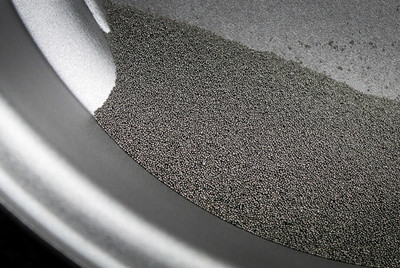Airblast Eurospray offers a range of blast hose sizes including 1/2", 1", 1 1/4" ID.
We’ve put together a quick guide to help you correctly size your blast hose.
How to Correctly Size a Blast Hose
All machine parts wear down and on occasion break-down and need replacing – especially those used in the process of blasting, and specifically those experiencing the impact of blast media.
With constant use, blast hoses will wear out quickly and can be potentially dangerous. Take a look at our Blast Hose Maintenance film for more information on what happens to blast hoses under pressure.
Blast Hose Wear
There are many factors that influence the rate and type of wear and tear on a blast hose; the type of media you’re using for the job at hand, the pressure you’re working at, and dragging hoses over structures or bending it sharply can all impact wear and tear rates, as can using the wrong clamp fittings, or even selecting the wrong type or size of hose for the blast nozzle you’re using.
Take a look at our Nozzles Brochure for more information
Sizing The Blast Hose
Ideally, your blast hose should have an interior diameter (ID) of three or even four times the nozzle’s narrowest point. Lower than three times, and the pressure in the hose is high - causing accelerated wear. Greater than four, and the pressure drops in the hose to a point that the exit pressure is affected.
That said, hoses are made in standard diameters and hose wear isn’t the only factor involved in choosing the correct hose for any particular task. They are heavy and unwieldy, which is why whip ends are used and hoses aren’t commonly used over 32mm ID in blast room environments.
If you are using a 9mm nozzle you ideally should use a 32mm blast hose, which will significantly reduce the pressure in the hose.
As a simple example, abrasive will be typically accelerated from the nozzle restriction at around 120mt/sec. If the blast hose is of the same ID as the nozzle restriction, abrasive will rip through the blast hose at the same speed and pressure. If that hose is then increased in ID to 32mm, the speed drops to 15mt/sec, thus dramatically reducing the wear of the hose, and then accelerates at the nozzle to 120mt/sec again.
Our Nozzle Pressure / diameter guide sets out the calculated consumption rates of air and abrasive for new nozzles.
Blast Hose Maintenance – Summary
Keep the hose away from chemicals, sharp edges, and vehicle movement.
Make gradual bends rather than sharp turns that might increase wear.
Use a safety cable if the hose runs over structures – to support the weight.
Close the metering valve after blasting.
Blow air through the hose to get rid of remaining abrasive.
Avoid operating in extreme temperatures.
Make sure all connections are secure.
Finally, check out our Airblast Nozzle chart here.




